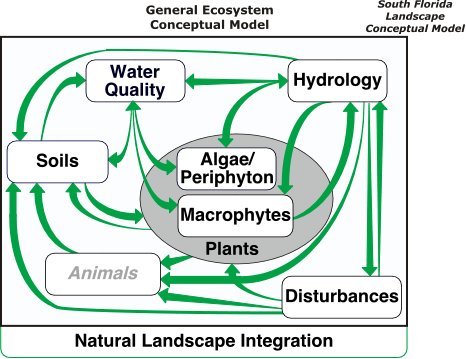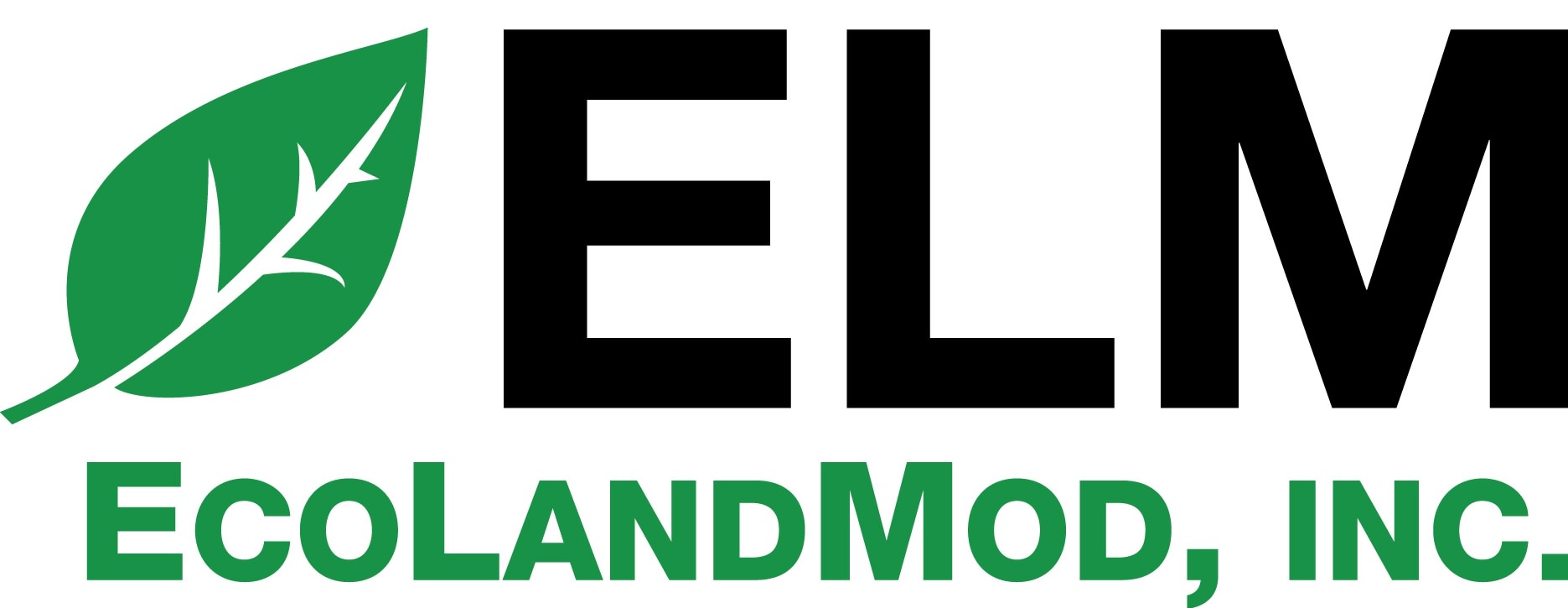![]() Background |
Models |
Projects |
Publications |
People |
News
Background |
Models |
Projects |
Publications |
People |
News
![]() Background |
Models |
Projects |
Publications |
People |
News
Background |
Models |
Projects |
Publications |
People |
News
Introduction
Wetlands & ecological models
Conceptual model: South Florida
Generic modeling framework

Water quality has been responsible for shifts in primary productivity and species composition of macrophyte and periphyton communities, and is another primary "driver" of the landscape at fast (weekly to annual) time scales.
Because the predominant "native" Everglades macrophyte and periphyton communities have adapted to oligotrophic (low nutrient) waters, increases in phosphorus and nitrogen (i.e., eutrophication) can be detrimental to the structure and the function of those communities. Phosphorus is generally the more limiting nutrient in the freshwater Everglades, while nitrogen may become important to plant productivity rates in estuarine situations, or where phosphorus is more available.
Typically, anthropogenic (man-made) loading of otherwise-limiting nutrients causes ecological imbalance, shifting the structure and function of the ecosystem. Management of flows through water control structures and canals has significantly modified the distribution of these nutrient loads and concentrations across the landscape. Different macrophyte and periphyton communities can uptake phosphorus and nitrogen at varying rates, changing the ambient water quality (and changing the plant tissues and growth).
As water exchanges among surface and soil/sediment pore waters, the associated nutrient fluxes can alter the microbially-mediated rates of soil/sediment decomposition, releasing nutrients in inorganic forms that are more available for biotic uptake. Along with nutrient availability, salinity gradients in the southern Everglades/Florida Bay have the potential to modify communities that have adapted to particular environmental conditions.
 EcoLandMod Background
EcoLandMod Background